WASHINGTON — For a lot of us, the month of June offers up dedicated space to reflect on your life and to feel pride in what you do and who you are.
We all look and act differently. Some of us play video games, others play sports, and some like a good drag brunch. While everyone just wants to find love and be accepted for who they are, most of us are happy to respond to people whose families taught them to hate anyone who’s different by pointing that middle finger toward the sky.
Though Pride Month brings the LGBTQ+ community together under a single umbrella, it’s important to know that the community isn’t a monolith. For the nerds out there, it mirrors Vulcan society in Star Trek which believes in “infinite diversity in infinite combinations.”
And likewise, there’s a Pride flag for almost every occasion. We’re going to break down 22 Pride flags, but we know there are almost certainly more than that.
The information below is largely pulled from the Human Rights Campaign, whose goal is to “ensure that all LGBTQ+ people, and particularly those of us who are trans, people of color and HIV+, are treated as full and equal citizens within our movement, across our country and around the world.”
This reporter cannot take credit for the information in this story, we're just putting it all in one place so people have the opportunity to learn something.
Gilbert Baker Pride Flag


In 1978, activist Harvey Milk asked artist Gilbert Baker to design a symbol of gay pride. Each color represents a different aspect of LGBTQ+ community. Hot pink represents sex, red represents life, orange represents healing, yellow represents sunlight, green represents nature, turquoise represents magic and art, indigo represents serenity, and violet represents the spirit of LGBTQ+ people.
Traditional Pride Flag

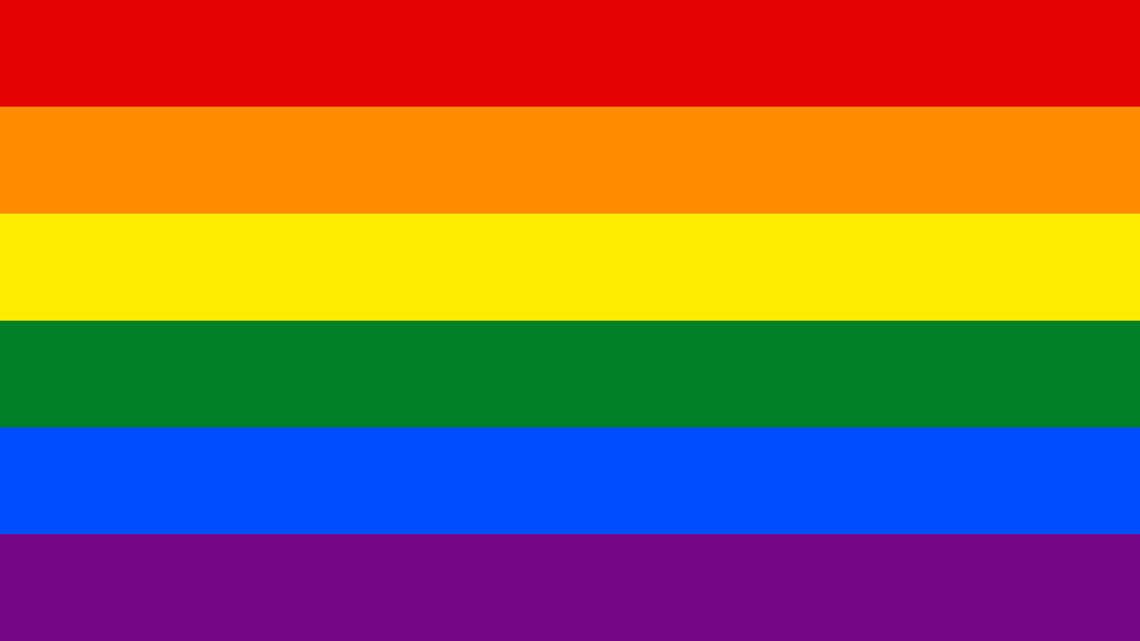
In 1977, Harvey Milk was elected to the San Francisco Board of Supervisors – becoming the first openly gay man to be elected to public office in California. Sadly, Milk along with San Francisco Mayor George Moscone were murdered inside San Francisco City Hall by a disgruntled former supervisor. After that, demand for the iconic pride flag skyrocketed. Baker decided to remove the turquoise stripe as a design choice, and manufacturing issues led to the removal of the hot pink stripe.
Philadelphia Pride Flag

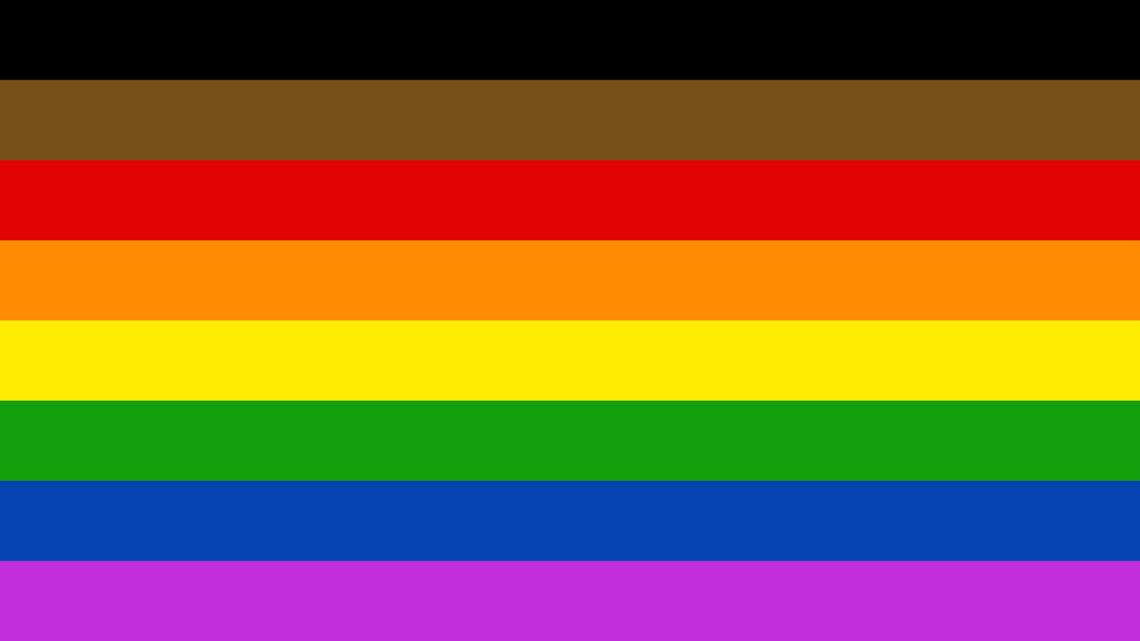
The city of Philadelphia has its very own pride flag, which was flown for the first time at the city’s pride event in 2017. It was actually commissioned by the Philadelphia City Council with the goal of bringing queer communities of color into the fold – feeling that they’d been left behind by “the mainstream LGBTQ+ movement.” The black and brown stripes on this flag represent communities of color and what they’ve contributed to the overall community.
Progress Pride Flag

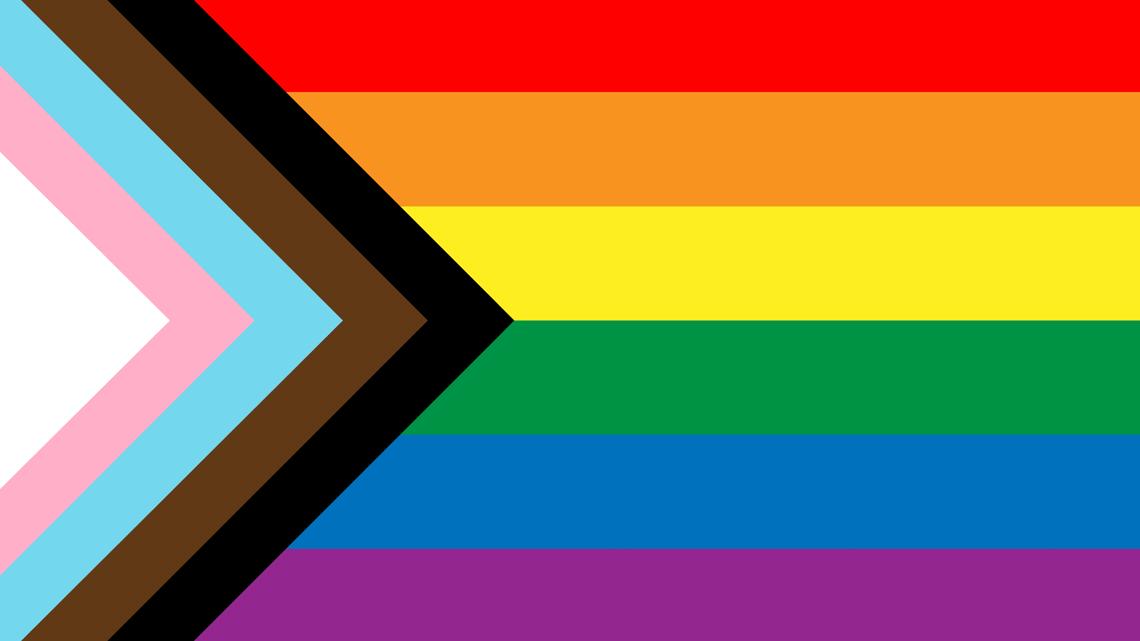
While the community isn’t any one thing or ideal, the Progress Pride Flag is the closest thing to being the LGBTQ+ community’s current “official” Pride Flag – if there even is such a thing. It’s really just the most commonly flown flag right now. Though, the Intersex-Inclusive Progress Pride Flag is currently surging in popularity. The Progress Pride Flag is a take on the Philadelphia Pride Flag. While it also has the black and brown stripes representing queer communities of color, the black stripe also represents and memorializes the thousands of lives lost in the community during the AIDS crisis. Its creator Daniel Quaser also added the white, pink, and light blue stripe to represent the trans community.
Intersex-Inclusive Progress Pride Flag

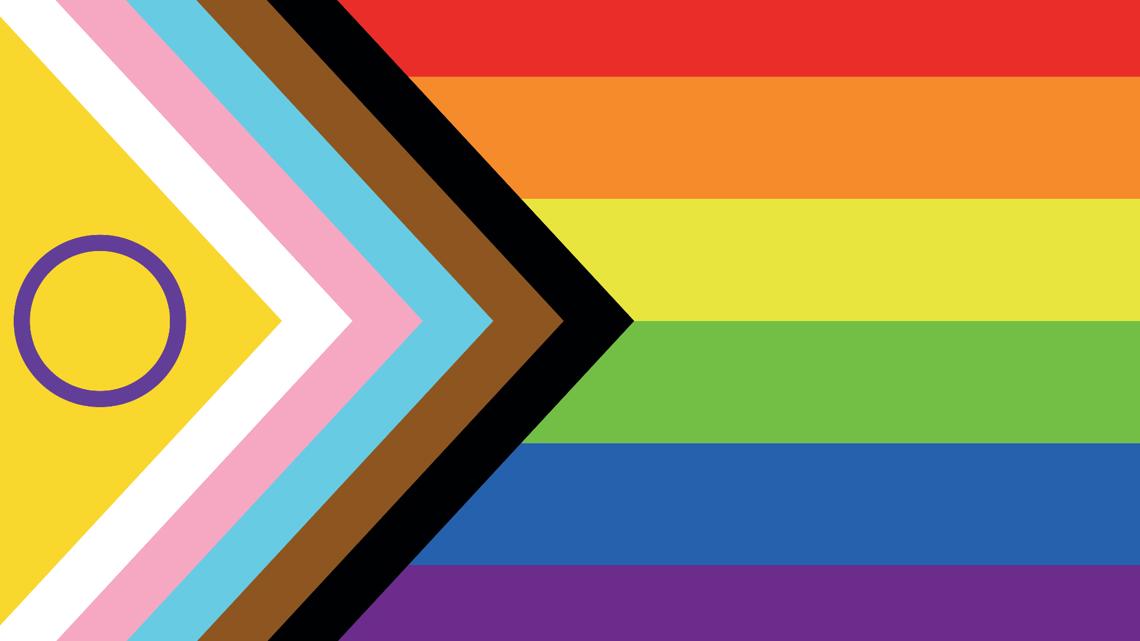
The Intersex-Inclusive Progress Pride Flag is an expansion on the Progress Pride Flag which adds the intersex community to the Progress Pride Flag. With this update coming in 2021, this serves as the most up-to-date LGBTQ+ flag. The flag was created by Valentino Vecchietti of Intersex Equality Rights UK.
Queer Pride Flag

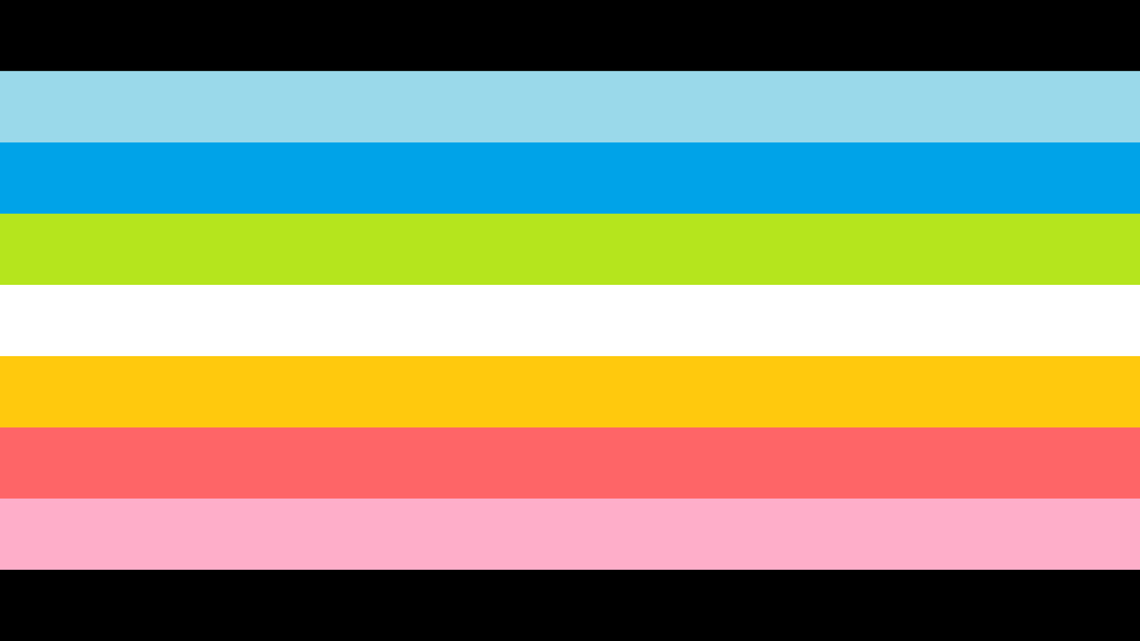
The word “queer” entered the English language in the 16th Century to mean “off-center” or “odd.” The term later devolved into a slur against people in the LGBTQ+ community. But by the 21st Century, the community had taken back the word that once wielded by bigots against them as a weapon and turned it into a point of pride – to say to the world: “I’m odd and proud.” The Queer Pride Flag was created in 2015 and represents all aspects of “queerness.” The Human Rights Campaign says that the pink and blue shades represent same-gender attraction, the orange and green stripes stand for non-binary and gender non-confirming individuals, and the black and white stripes symbolize asexual, aromantic, and the agender community.
The second set of Pride Flags that HRC groups together represent the many sexual orientations that exist.
Lesbian Pride Flag

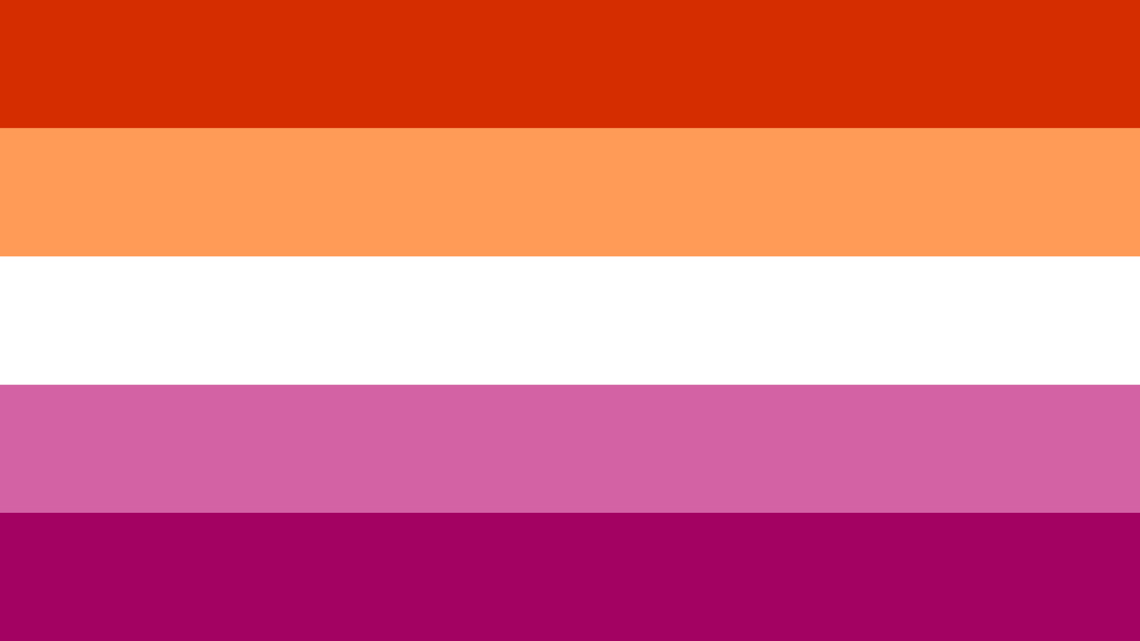
Updated in 2018, the Lesbian Pride Flag has seen many variations over the years and currently features seven shades of pink, orange, white and red. The pink and red represent love and the attraction to women, orange represents community, and white represents intersexuality.
Trans-Inclusive Gay Men's Pride Flag

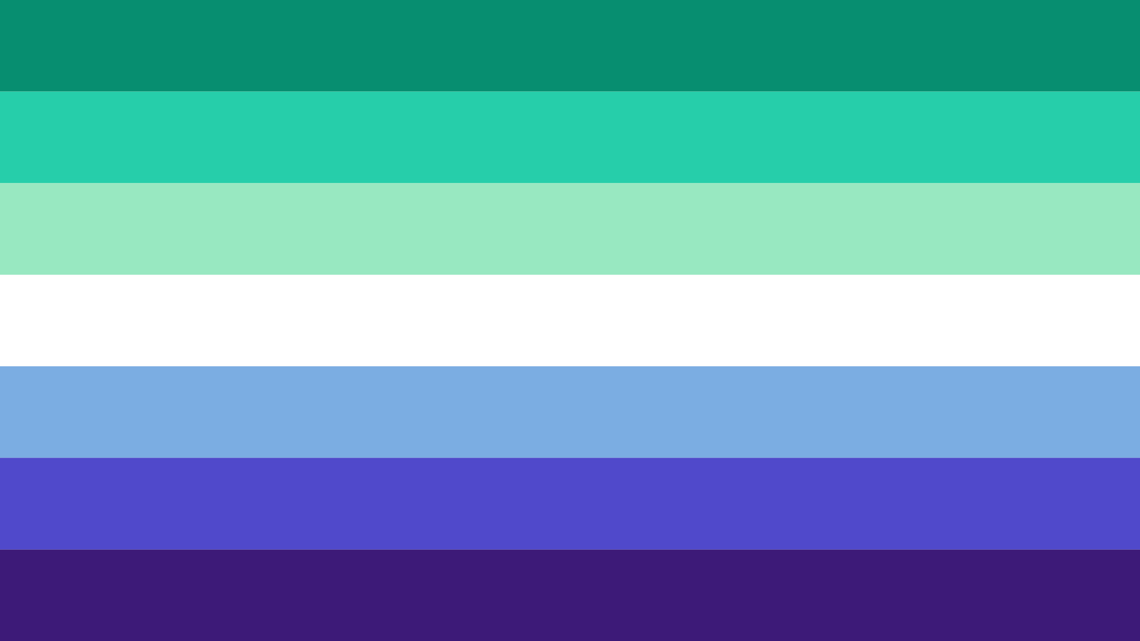
The Trans-Inclusive Gay Men's Pride Flag is the second version of the Gay Men’s Pride Flag. It was updated to be inclusive of transgender men. The shades of green and turquoise represent community and healing, the blue and purple shades represent love, diversity and fortitude, and white represents non-cisgender, transgender, and non-binary people.
The word cisgender means you are the same gender now that you were at birth.
Bisexual Pride Flag

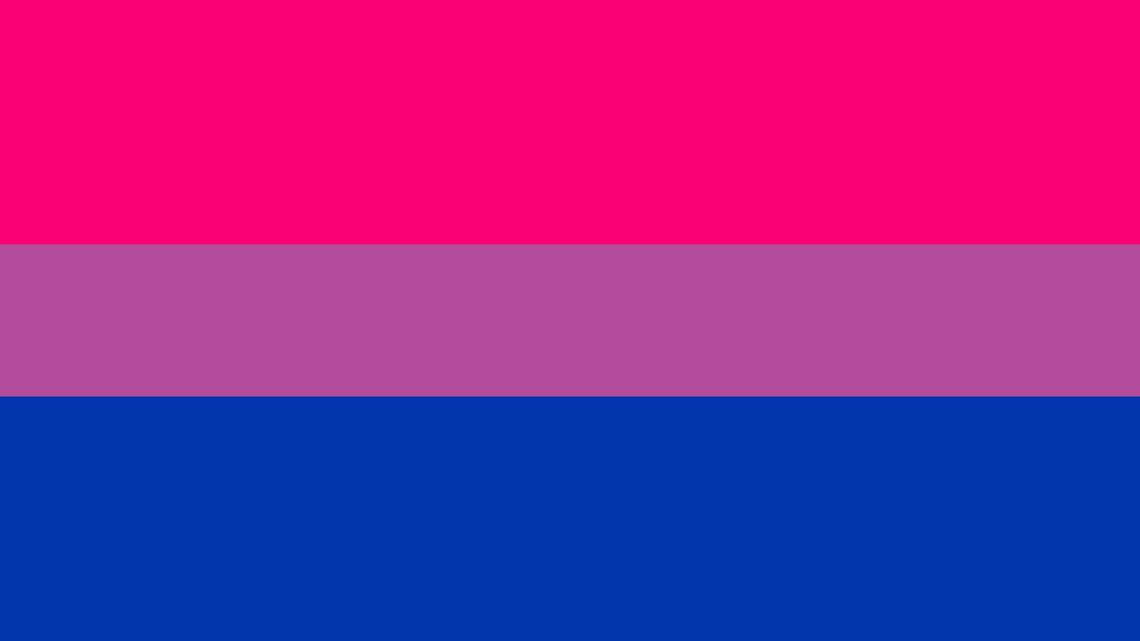
In an effort to raise awareness of the bisexual community, in 1988, Michael Page created the Bisexual Pride Flag. Pink represents one’s attraction to the same sex, blue represents one’s attraction to the opposite sex, and purple unifies the two representing attraction to two genders.
Pansexual Pride Flag

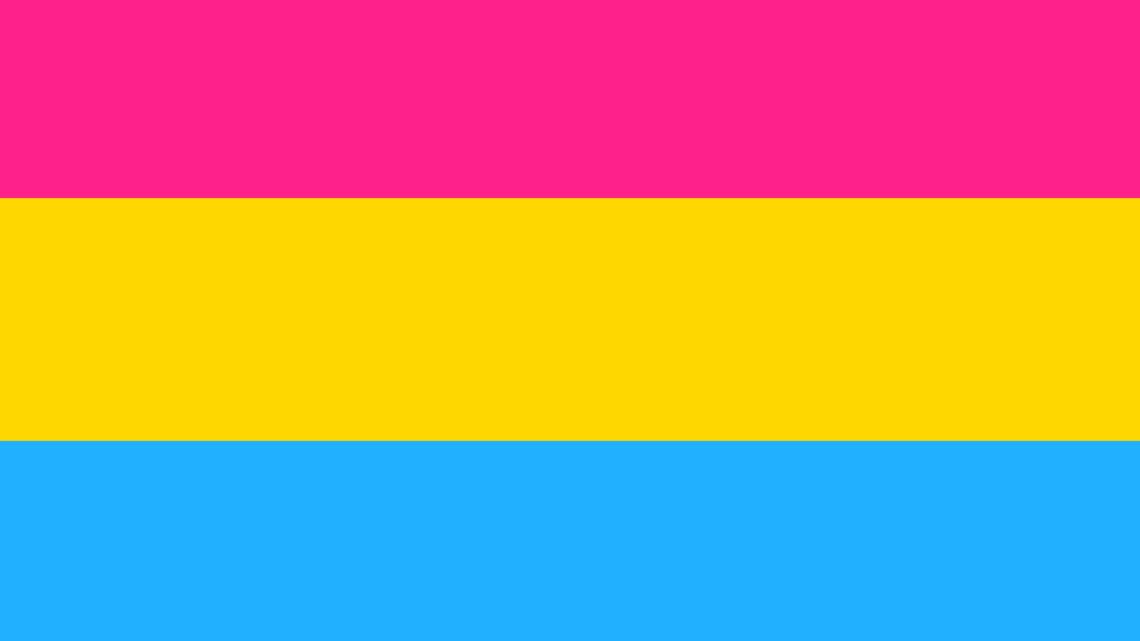
The Pansexual Pride Flag was adopted around 2010 to bring awareness to the community. People who identify as pansexual are those who can be emotionally, romantically, and sexually attracted to people of any gender. Pink represents the attraction to women, blue represents the attraction to men, and yellow is for everyone else in between – beyond the binary.
What’s the difference between bisexual and pansexual? Well, there’s a bit of nuance. Bisexual people are attracted to people of a specific (though varying) gender, while pansexual people are attracted to people regardless of their gender.
Asexual Pride Flag


Love does not equal sex. Asexual people do not have a sexual attraction to any gender. A contest by the Asexual Visibility and Education Network led to the creation of the Asexual Pride Flag in 2010. Black represents asexuality, gray represents gray-asexuality and demisexuality, white represents non-asexual partners and allies, and purple represents community.
Demisexual Pride Flag

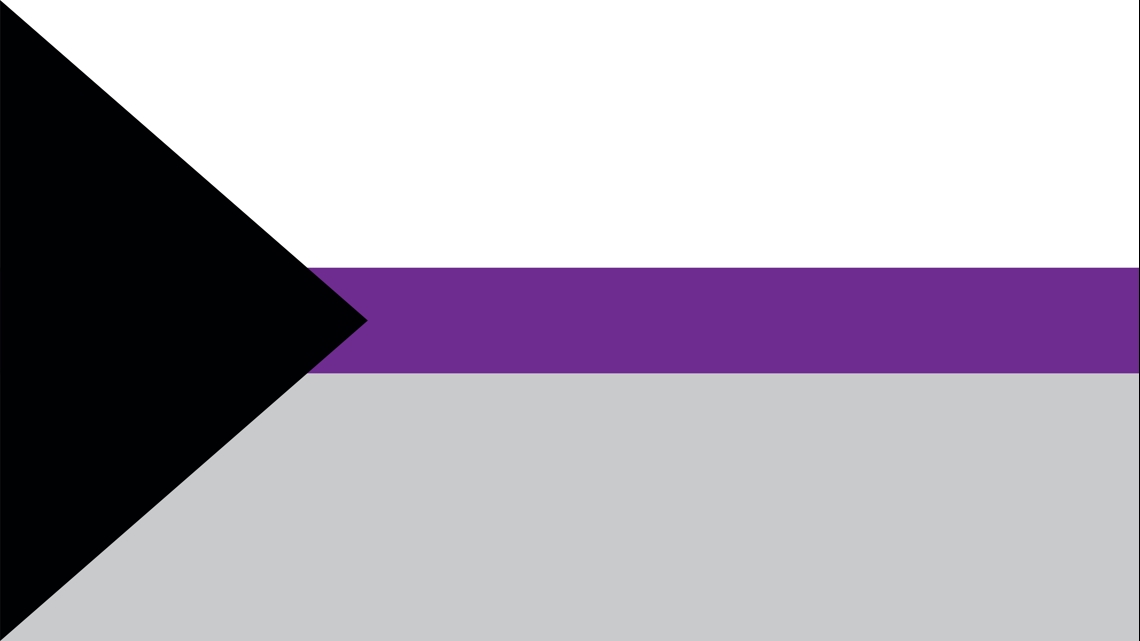
Demisexual people only feel sexually attracted to someone when there’s an emotional bond between them. The internet doesn’t seem to know when or who created the Demisexual Pride Flag, but it does know that black represents asexuality, gray represents demisexuality, white represents sexuality, and purple represents community.
Polyamory Pride Flag

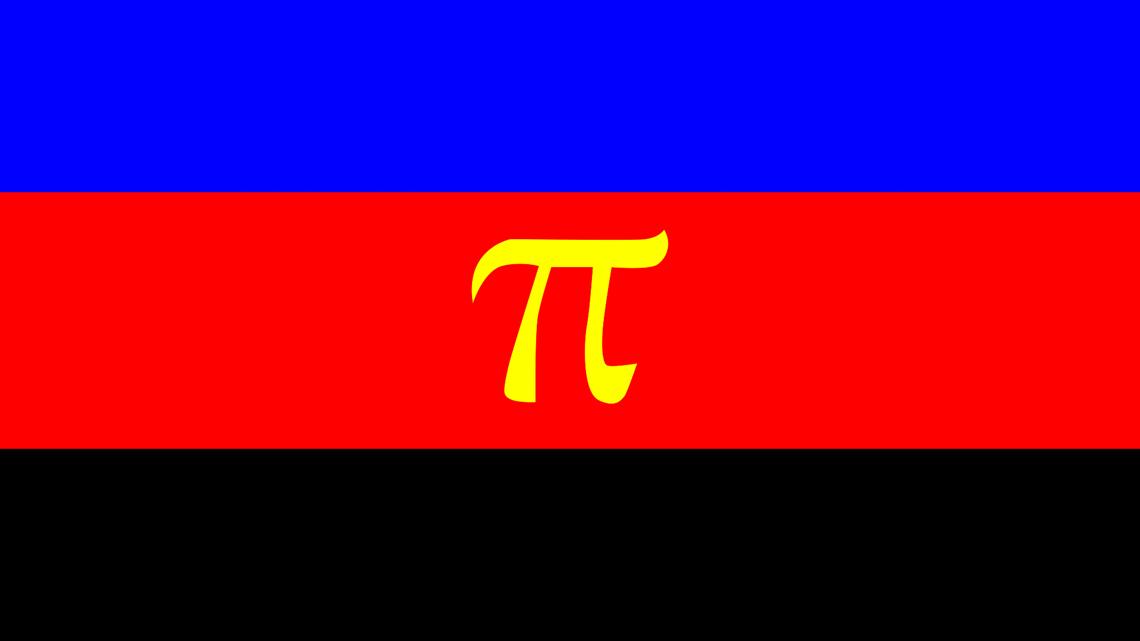
The Polyamory Pride Flag was created in 1995 by Jim Evans. Polyamorous people are capable of multiple loving relationships simultaneously with the knowledge of consent of all parties involved. Blue represents openness and honesty of everyone involved, red represents love and passion, black represents solidarity with those who must hide their polyamorous relationships, and the Pi sign represents the infinite options of partners available to those who are polyamorous.
Polysexual Pride Flag

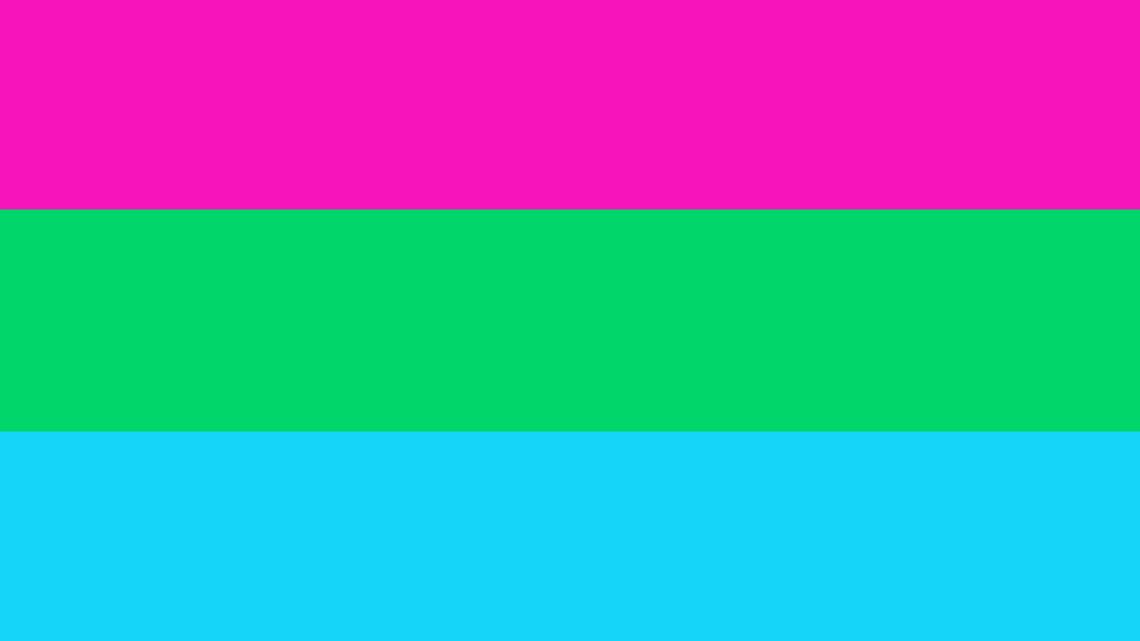
The Polysexual Pride Flag was created in 2012 and represents people who are attracted to multiple genders, but not necessarily all of them. The blue stripe represents the attraction to men, while pink stands for the attraction to women. Green represents the attraction to people outside of the binary.
Transgender Pride Flag

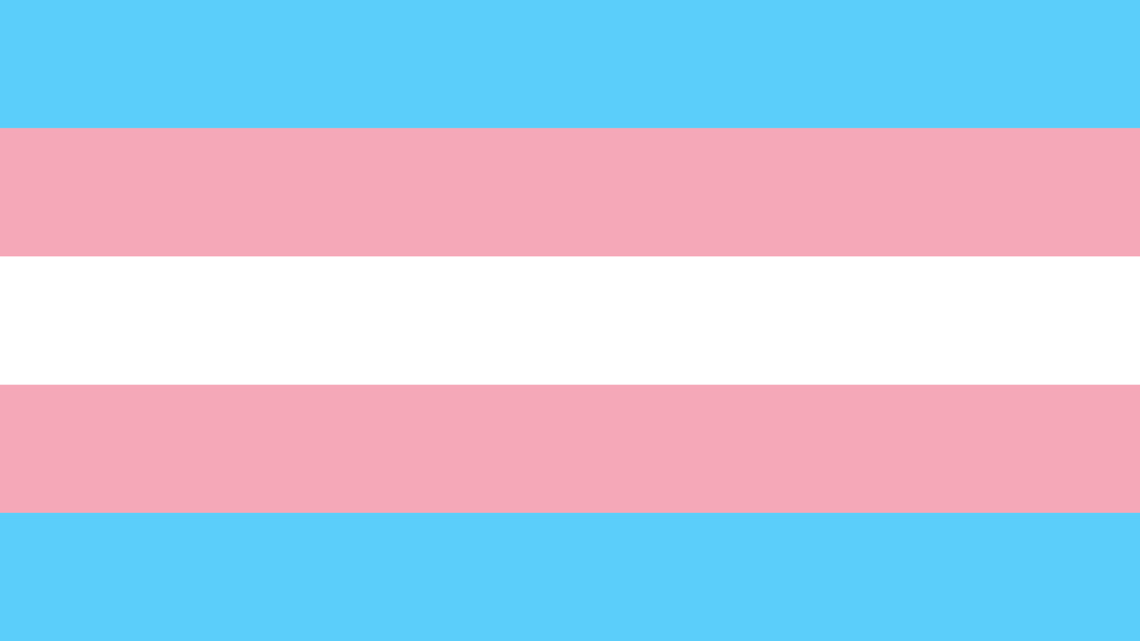
The Transgender Pride Flag was unveiled in 2000 at Phoenix Pride and was created by Monica Helms, a trans activist and U.S. Navy veteran. The pink and blue stripes represent the traditional boy and girl colors, while the white stripe represents people who are intersex, transitioning, or have an undefined gender.
Nonbinary Pride Flag

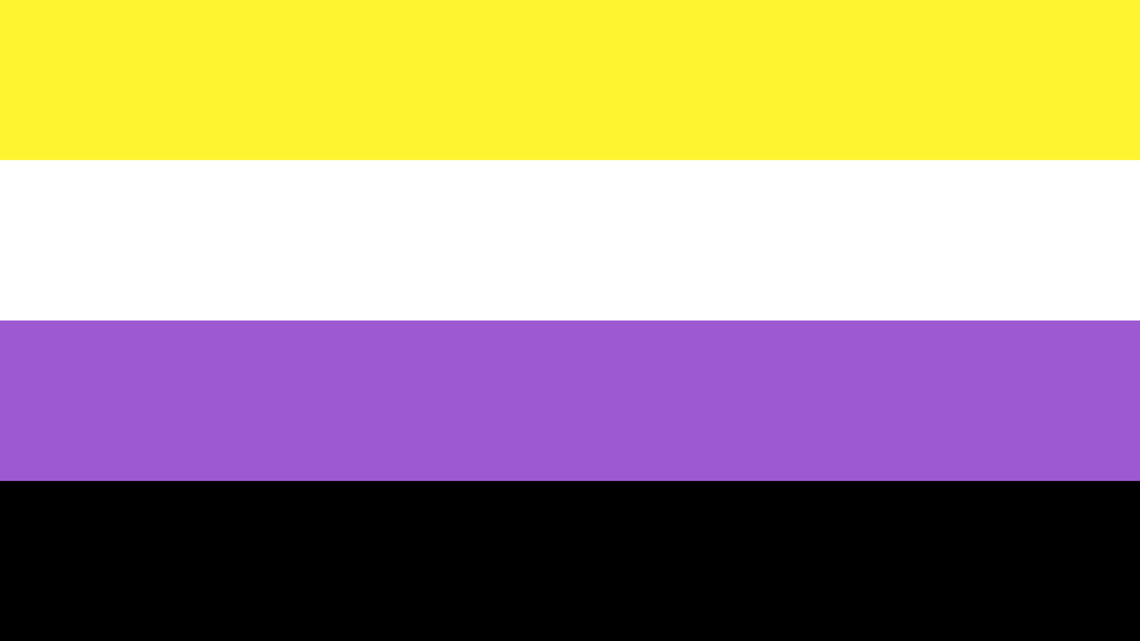
The Nonbinary Pride Flag was created in 2014, and it represents people who don’t identify with either of the binary genders. The yellow stripe represents gender outside of the binary. The white stripe represents people with multiple or all genders. The purple stripe represents people who fall between the male-female binary. The black stripe represents people with no gender.
Intersex Pride Flag

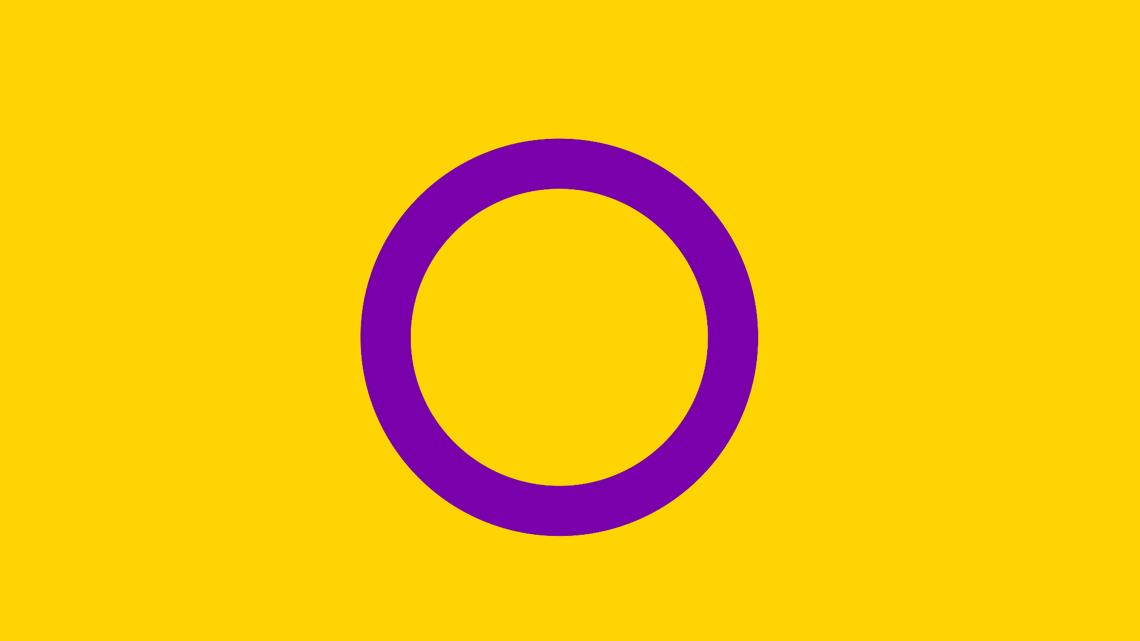
The Intersex Pride Flag was created in 2013 by Morgan Carpenter. People who are intersex are born with a variety of differences in their sex traits and reproductive anatomy. There isn’t one specific way an intersex person is, since everyone’s experience is unique; intersex people may have any combination of sex assignment, sexual orientation or gender identity. The flag’s yellow and purple colors are seen as gender neutral, while the circle side steps any gender symbolism.
Genderfluid Pride Flag

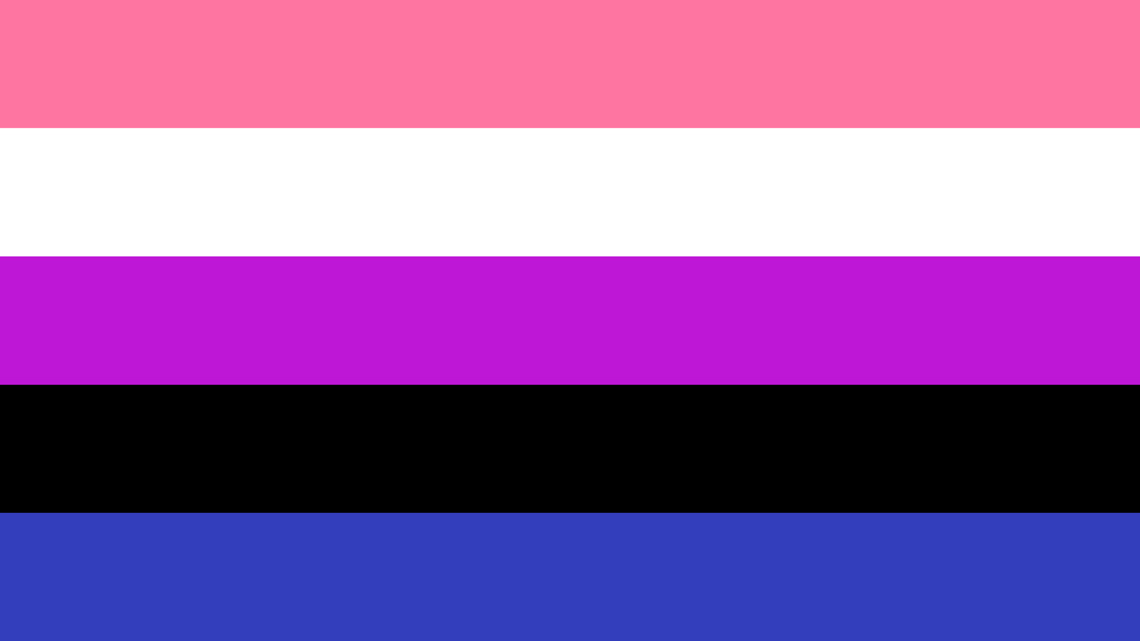
The Genderfluid Pride Flag was created in 2013 by JJ Poole and represents people whose gender identity or gender expression fluctuates at different times and during different circumstances. The pink stripe represents femininity. Blue represents masculinity. White represents a lack of gender. Black represents all genders. Purple represents the combination of masculinity and femininity.
Genderqueer Pride Flag

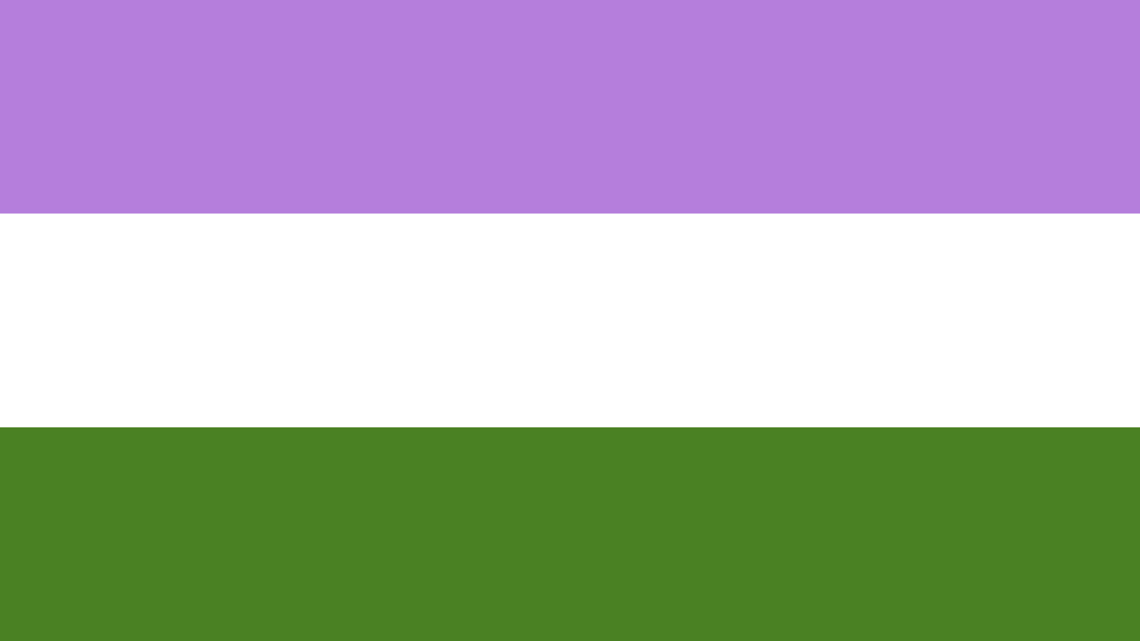
The Genderqueer Pride Flag was created in 2011 by Marilyn Roxie to represent people who reject the fixed genders. Genderqueer can be both or neither male and female – or beyond the binary. The lavender stripe represents androgyny and other queer identities. The white stripe represents agender people. The green stripe represents people who fall outside of the binary.
Agender Pride Flag

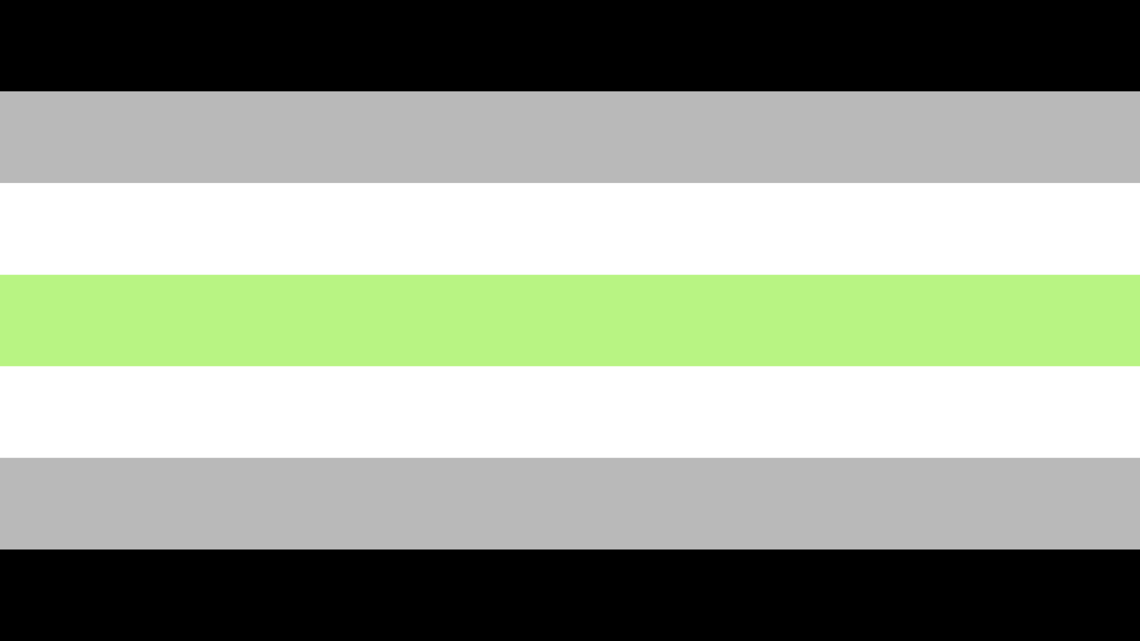
The Agender Pride Flag was created in 2014. It represents people who have an unidentifiable gender, who are gender neutral, or who have no gender at all. The black and white stripes represent the absence of gender. The gray stripes represent semi-genderless people and the green stripe represents non-binary people.
Bigender Pride Flag

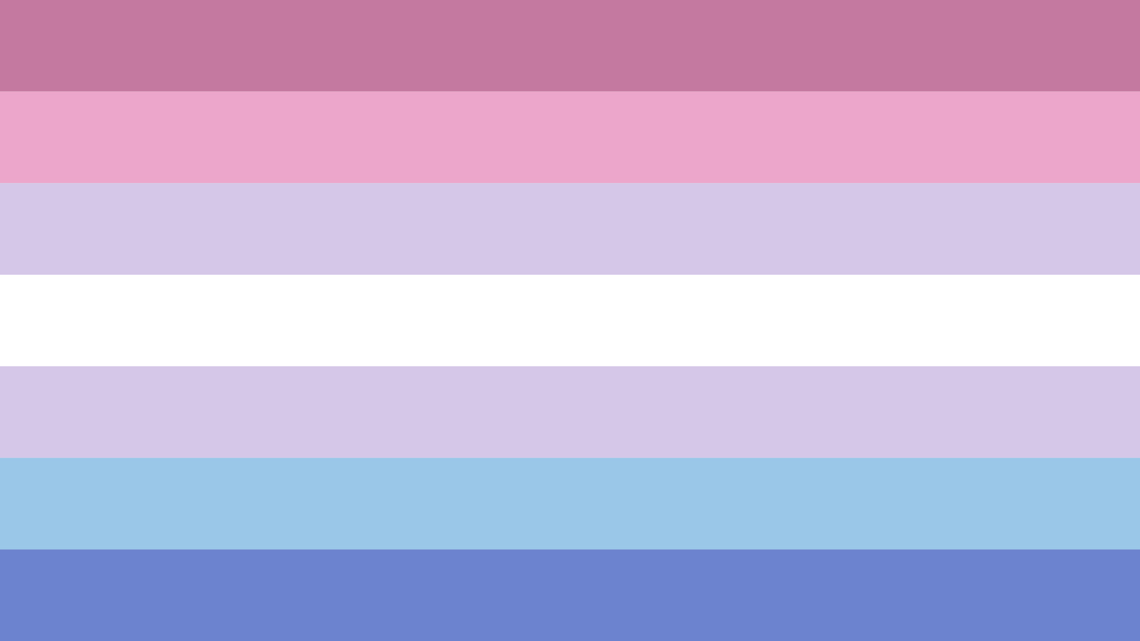
The Bigender Pride Flag represents people who have two genders. While this can mean both male and female, it also accounts for combinations from outside the binary. The flag is believed to have been created by someone who used the username “no-bucks-for-this-doe” and it’s believed to have been created around 2014. But its full origin is unknown.
Demigender Pride Flag


The origin of the Demigender Pride Flag is unknown, but the flag represents people who have a partial feeling, but not a full connection, to a particular gender identity or to the concept of gender. Anyone can be demigender regardless of what gender they were assigned at birth. Demigender people may identify as another gender in combination with their demigender identity.
Again, all of this information and more can be found on the Human Right's Campaign's website.
WATCH NEXT: DC Capital Pride Parade 2024
Do you have a news tip on this story or any other story? We want to hear from you. Tell us about it by emailing newstips@wusa9.com.
MORE WAYS TO GET WUSA9
DOWNLOAD THE WUSA9 APP
Apple App Store: WUSA9 News on Apple
Google Play Store: WUSA9 News on Android
HOW TO ADD THE FREE WUSA9+ APP TO YOUR STREAMING DEVICE
ROKU: add the channel from the ROKU store or by searching for WUSA9.
For both Apple TV and Fire TV, search for "WUSA9" to find the free app to add to your account. Another option for Fire TV is to have the app delivered directly to your Fire TV through Amazon.
SIGN UP TO RECEIVE WUSA9 NEWSLETTER
Subscribe to our daily WUSA9 Newsletter for top stories from WUSA9 curated daily just for you. Get content and information right now for can’t-miss stories, Commanders content, weather, and more delivered right to your inbox.

